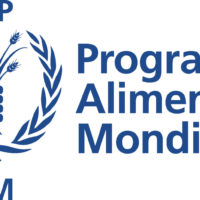Burundi is ranked among the most affected by food insecurity and chronic malnutrition. Then, fortification of some staple food should help to tackle the issue.-By Diane Uwimana

Bienvenu Djossa, the Burundi World Food Program Representative and Managing Director: “We will talk and talk until the situation changes in this country.”©Iwacu
Burundi presents a 38.8 indicator in 2013 on the global starvation index. “This index was established at 37. 9 points in 2010. This ranks the country at the second worldwide ranking within the starvation index, » states Bienvenu Djossa, the Burundi World Food Program Representative and Managing Director. He indicates that the current level of the chronic malnutrition average is established at 58% of children less than five years at national level, an average which hides some provincial disparities.”In certain provinces like Ngozi, chronic malnutrition average goes at 71% for children aged less than five years”, mentions Djossa. The Burundi World Food Program also mentions that chronic malnutrition causes many negative effects related to physical and psychological nature of the children. “We will talk and talk until the situation changes in this country, “he underlines.
For him, fortification of staple food should help to soothe the situation. “We must fortify some food but the important thing to do, is to find out the solid accompanying measures of regulation and implementation, follow- up and evaluation of different actors,” he emphasises.
According to Antoine Cishahayo, Assistant of the Minister of Trade, Industries, Posts and Tourism, the country has already identified some staple food to be fortified. “There are oil, sugar, salt and maize and wheat flour. These staple food should help as micronutrients to people”, he underlines.
Following the EAC harmonization norm standards, oil and sugar will be fortified in vitamin A, flour in iron, zinc and folic acid. Salt will be fortified in continuing iodine. Damien Nakobedetse, the Director of Burundi Bureau of Standards and Quality Control, indicates that the fortification of staple food has begun with the EAC healthcare Ministries and then spread to others in order to contribute and decrease malnutrition and food insecurity.



















 IWACU Open Data
IWACU Open Data

